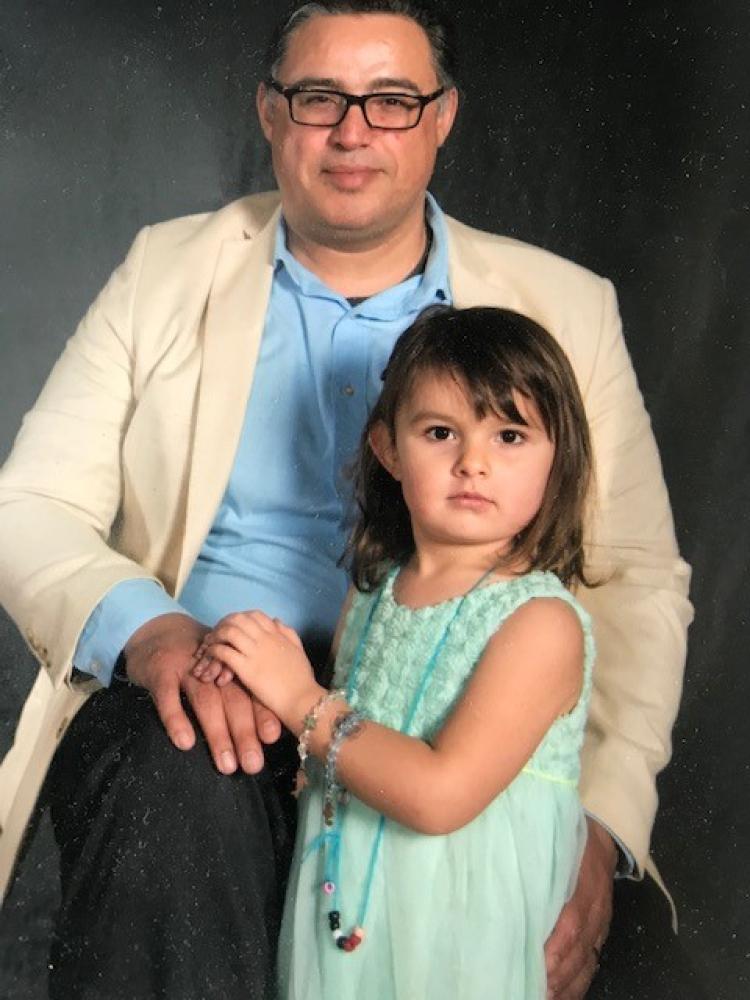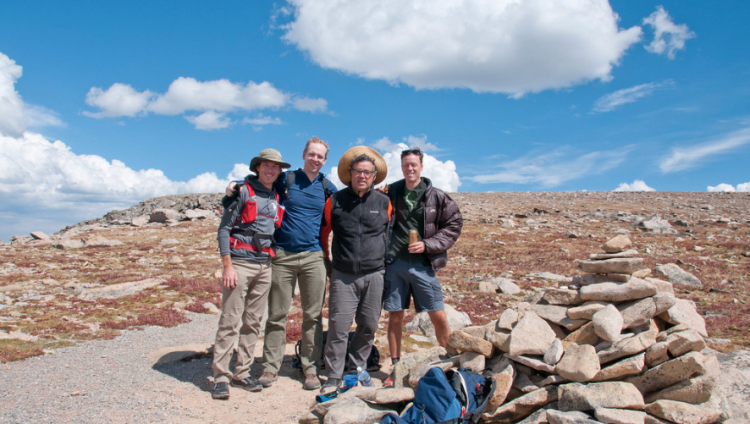Biopharma Innovator: Celso Espinoza

From the Gridiron to the Bench
Celso started his scientific career, as many undergraduates do, interested in medicine. Unlike many, he was also playing inside linebacker for Cal State – Sacramento’s football team. Celso took to interdisciplinary research at Cal State under Drs. Roberts and McCarthy, who encouraged graduate studies at a number of programs, including CU Boulder’s Chemistry and Biochemistry Department (we officially split in 2018). “They said you know whatever you do, find someone you can get along with; so, during [CU’s] rush week, I met Jim [Goodrich].” Needless to say, they got along. Dr. Goodrich, coupled with mountain views, hiking and biking trails, and a departmental emphasis on genome-wide investigation, made CU Biochem Celso’s first choice for earning a Ph.D. Despite his undergrad research experience, Celso recalls his first weeks building a foundation of transferrable skills under Jim’s guidance:
After meeting Jim, and working for him, I wanted to be more like Jim, thinking creatively. I really enjoyed being in his lab. You don’t come in with all the tools, so he had to work really hard to teach me everything. He taught me how to think, problem-solve, and be efficient, and I really appreciated his help.
Outside of finding an influential mentor, Celso fondly remembers his time in Boulder spending time with faculty and peers outside of the lab. He enjoyed participating in the annual departmental retreats, where graduate students would share their most recent findings with the rest of the department and spend time with faculty and classmates in an informal setting. He also vividly remembers taking long bike trips organized by faculty, particularly a grueling 2-day, 40-mile bike ride through Rocky Mountain National Park with current CU Biochem instructor Dr. Rico Stephen.

Transitioning to the Private Sector
After earning his Ph.D. under the tutelage of our Dr. Goodrich, opportunity struck again, this time with the esteemed epigeneticist Dr. Bing Ren at the University of California San Diego, a pioneer in CHIP-seq technology. Once his postdoctoral fellowship under Dr. Ren concluded, Celso moved into biopharmaceutical research and development, where he has been a key investigator in some major therapies. Day-to-day, this means conducting experiments and analyzing results, not unlike a primary investigator at a private institution, albeit with a bit more vertical hierarchy. Celso manages a team of scientists (focusing on genomic and transcriptomic approaches in his case), sets research agendas, and communicates results to other research groups and AbbVie’s corporate offices:
I go to about one conference a year to stay up to date in the field. In the private sector, you may have to travel to various sites to work with different teams, but you don’t share your results with other organizations as often. In my work, I work with microbiologists, chemists, folks doing clinical trials, and we all come together to answer a research question. There are typically a lot of channels to go through before we are ready to present our findings to the public.
The Future of Biopharma
Celso believes biopharma may be the next industry to see seismic changes, not unlike the personal computing industry in the Eighties:
Look at Steve Jobs; he figured out how to put everyone together with the iPhone. If someone could do that with genomics, they’d be a billionaire. If you look at companies who are doing whole-genome sequencing, like 23 and Me, they’re just beginning to use the data we get from someone’s genome. Genetic counseling, pharmaceutical research, it's bigger than all of us. We’re starting to learn how the genome works across each layer—epigenetics, RNA, DNA. Ιt would be nice to have a clear answer, but we still don’t know just how far the frontiers like RNA go.
In Celso’s field, this means understanding the function and interactions of a growing proportion of the human exome and proteome it encodes, at a clarity that allows identification of nucleotide-level changes responsible for pathology. For example, Celso’s group has most recently focused on how the body metabolizes drugs and variance in reaction to therapies. Recent breakthroughs in bioinformatic software, big data cloud computing, and our collective understanding of the genetic code of life mean Celso’s predictions may not be so far away. Perhaps one of our own Biochem Buff readers will be the pioneer Celso envisions.
Building Bridges
When asked how aspiring biochemists might replicate Celso’s professional successes, he recommends engagement and passion. Celso’s time at CU Biochem included participation in Biophysics Club and RNA Club, where he forged friendships and fostered a growing professional network:
These are skills I still use today. It’s very important to be able to communicate and provide positive feedback. You also have to find a passion. If you’re not passionate about your work, it’s going to be a long, long journey. In my field, a lot of people on the outside forget that for [pharmaceutical researchers], the patients come first. Helping people get better, that’s our main motivation.
As part of the Goodrich Lab, Celso focused on mechanisms of transcription, a novel approach at the time.
Most of the things I worked on in grad school were mechanisms. [Jim’s] lab was a transcription lab, but there weren’t any people studying the function of RNA, so I took over a project finding the secondary structure and figuring out which part of RNA binds to proteins, which led to more research into epigenetic mechanisms.
The work would prove integral to Celso’s transition into pharmaceutical research. Today, Celso develops 3-D assays to understand the function of various sequences within the human genome, with the end goal of identifying genes responsible for phenotypic variance associated with disease, and then using that understanding to develop therapies that target these pathways.


